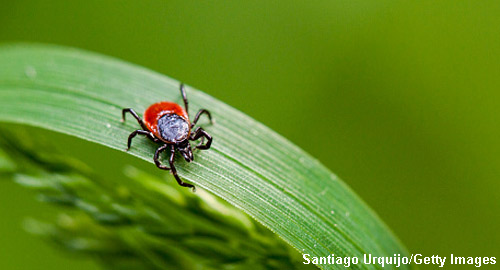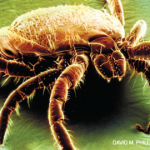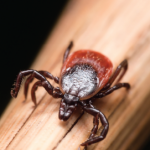 Lyme disease and Lyme arthritis—a late manifestation of the disease—are on the rise across the U.S. and Canada. And rheumatologists in all regions need to be at the ready.
Lyme disease and Lyme arthritis—a late manifestation of the disease—are on the rise across the U.S. and Canada. And rheumatologists in all regions need to be at the ready.
“In endemic areas, rheumatologists and primary care physicians are aware of Lyme arthritis,” says Allen C. Steere, MD, principal investigator within the Massachusetts General Hospital Center for Immunology and Inflammatory Diseases and professor of medicine at Harvard Medical School, Boston. He cautions that physicians in other areas to which the disease is spreading may not yet be aware of this entity. Dr. Steere is recognized internationally as the pioneer in discovering Lyme disease and leading Lyme disease and arthritis research and treatment.
A Growing Problem
Each year, an estimated 300,000 new cases of Lyme disease occur in the U.S., concentrated heavily along the East Coast, from Maine to North Carolina.1 The infection is also found in the Midwest, in Wisconsin, Minnesota and Michigan, and cases occur on the West coast sporadically, primarily in northern California.
Lyme disease is spreading geographically into states contiguous with those previously affected.2 For example, locations in western Pennsylvania are greatly affected now, and the infection is moving into Ohio. In addition, the disease is spreading north to Canadian provinces, Nova Scotia, Dr. Steere notes.3
A Complex History of Evolution
Lyme disease could be the poster child for survival of the fittest. The disease has come back with a vengeance after being nearly wiped out during the European colonization of North America, when deer were hunted to near extinction and forests were felled for farmland in the Northeast. As industry replaced farming in the 20th century, farmland reverted to forest areas, and deer, which were brought to the Northeast, proliferated. These changes, along with other ecological factors, allowed for resurgence in tick vector populations that have provided a breeding ground for the Lyme disease bacteria Borrelia burgdorferi.4
In 1976, Lyme arthritis was recognized when Dr. Steere and colleagues found a cluster of children with arthritis in Lyme, Conn. This incident led to the description of Lyme arthritis, which was later shown to be caused by a newly recognized tick-borne spirochete named B. burgdorferi.5 Various strains of this organism cause infection in North America, Europe and Asia.
“There is marked strain variation in different geographic locations and even in the same locale, which likely is an important factor in differences in the clinical manifestations of the disease,” Dr. Steere explains. For example, certain strains in the Northeast and Midatlantic states are particularly virulent and arthritogenic.6


